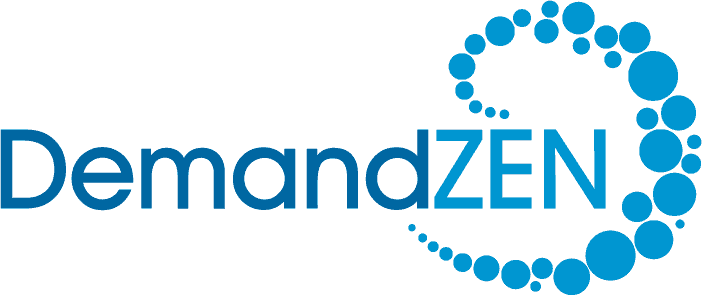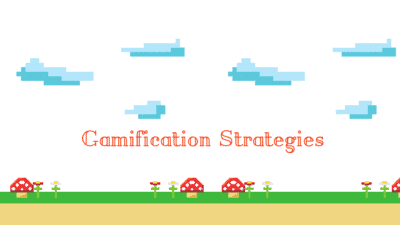Get More Sales With These Six Inbound Marketing Tips

Why is inbound marketing gaining such steam? Why are so many people saying that inbound marketing is the future? Is it hype, is it real? Let’s look into this and find out.
The fact is that people don’t respond to traditional interruptive ads as much as they used to. They reach for the remote when commercials are on or record shows so they don’t have to watch the ads. When they surf websites, many of them install ad-blockers. And when they walk outside, they completely tune out most billboards.
The reason is simple. This type of traditional advertising is pushed upon the consumer. It’s unsolicited and intrusive. This type of interruption-based marketing is what’s known as “outbound marketing”. If you want to stay competitive and boost sales in today’s market, you will want to incorporate inbound marketing into your overall strategy.
People’s purchase behavior has changed a lot in the past couple of years
Many of us are fed up with outbound, interruptive marketing. We no longer just “go online”, we are online, we live online. We can look up whatever we want instantly. And as consumers, we want to know as much as possible about the products that we may potentially buy. It takes only a minute to find out what other people have to say about a product.
Basically, the modern consumer is in control of the sales process. Inbound marketing capitalizes on this understanding. As opposed to traditional efforts, this approach is much more subtle. You let people find you by capturing their attention in a way that feels natural and non-intrusive.
If you want to stay competitive and boost sales in today’s market, you will want to incorporate more inbound marketing. Note that word there, “incorporate”. There’s no reason to go overboard and completely abandon outbound marketing, just because inbound marketing is the new buzzword. An ideal strategy will combine inbound and outbound marketing in a synergistic way.
How does Inbound marketing work?
As a general rule, when you use inbound tactics, you aim to educate and help people. You focus on creating valuable content, tailored to the preferences of your target audience.
Inbound marketing can be deployed through multiple channels, that is wherever people spend their time online. And inbound marketing content can be delivered through blog posts, forums, email, webinars, social networks, white papers and more. The idea is to make your content visible, read and shared, increasing your SE engine rankings.
This approach achieves many goals, including that:
- The customer “discovers you and your products”. This is why we call it “inbound” marketing
- They develop trust and respect for you, based on the quality of content, and
- They feel in control, since they “found you”, and “learned” about your products and services
Inbound marketing allows two-way communication with your prospects. This way, as your relationship develops, you can learn more about them. And the more you learn, the better you’ll be able to personalize your content. You’ll establish a bond of trust, so that they are more likely to choose you once they are ready to buy.

Why your business needs inbound marketing
You may have to cover significant costs when trying to generate leads through outbound efforts. This is especially true if you try to do it on your own and are not an expert on it. On top of that, a fair portion of outbound traffic will never convert. On the other hand, inbound marketing focuses on people that have already shown interest.
With inbound traffic, you waste no time or resources on people who are never ever likely to become a customer. Inbound marketing only deals with the potential customer. All of these visitors have confirmed interest in the topic, and this makes your job so much easier. With inbound marketing, people reach out to you, instead of you trying to interrupt them and create an interest.
Here’s another way to look at this. Each of your outbound lead gen efforts is “isolated and independent”. On the other hand, inbound efforts have a cumulative effect. Your past, present and future content coexist, continuing to bring value for years to come. The valuable content that you put today will get discovered by new customers. But so will the content you put out yesterday and the one you put out a month ago, or a year ago.
Additionally, inbound marketing fosters brand reputation unlike anything else. When you post valuable content, you become a source of reliable information and expertise. This, in turn, makes you an “authority” in the eyes of your potential customers.
Note, this isn’t to say that inbound marketing is the only way to build a brand. You can and should build your brand through outbound strategies as well. The trick is to understand how to combine the two strategies for a synergistic effect that turns your company into a killer brand.
Tips to maximize sales using inbound marketing
As we’ve already discussed, today’s empowered customers want to make their own purchase decisions. They want to feel in control. Whatever your business, inbound tactics can bring you prospects and boost your sales potential. Let’s look at the six main things you need to master in order to start getting more sales with inbound marketing.
1. Create high-quality free content
High-quality content is the cornerstone of all inbound marketing strategies. You need to create valuable content that attracts customers. Your content can come in many forms, including blog posts, videos, white papers, infographics, tweets, linking to useful resources, and more.
At the very least, you want to start by producing well-written content that is relevant to your customer base. Yes, there are ways to do content marketing “in an optimal way”. No, you don’t have to wait until you figure it all out. Installing a business blog is pretty easy and straightforward. All you have to do is start posting blog posts that provide useful tips or news about your industry.
You can, of course, ask for help and get professionally produced content. However, the most important thing is to get started with building your content portfolio as soon as possible. Content marketing has a cumulative effect.
You don’t want to spend 6-12 months producing zero content while you’re busy “learning how to do it perfectly”. It’s better to spend those 6-12 months producing “imperfect” content.
Note that all of the inbound marketing strategies we’ll discuss require that you have at least some portfolio of content. So it’s important that you get started with building up that treasure chest of valuable content – as soon as possible.
2. Use social networks to attract customers
Thanks to their global reach, social platforms are an efficient way to engage with a wide audience. Use them to share attractive content and promote your products and special offers. Interact with your audience, answer their questions, seek their opinion and monitor their comments. Encourage them to follow you, share your content and visit your website or landing page.
Place prominent sharing icons on your website so that people can share content with a single click. Always publish relevant content that is attractive enough to get those shares.
Analyze and track user engagement on social media to see which platforms work best for you. The choice will depend on your industry, but LinkedIn and Facebook are a safe bet for most companies.
Frequent posting on social media increases your brand visibility, broadening your reach. Constant presence and interaction with your target audience also strengthen customer loyalty.

3. Optimize your content for the for search engines
Today, the buyer’s journey for many people begins with an online search. A lot, or even most of your inbound marketing traffic will come from search engines. So you need to make sure you’re good at getting that “search engine love”.
But what do you need to do in order to attract the respect and appreciation of those search engines? Well, as of today, the main thing that determines your rankings is the quality of your content.
In the old days of the internet, you could have horrible content and still rank well. The search engines, however, have spent years making sure that their algorithms can “recognize quality”. And they’ve mostly been successful at this.
After you ensure that your content is highly valuable, you can then focus on mastering “search engine optimization”. This is quite a broad topic and out of the scope for this guide. However, there are a couple of major things you need to know to get started.
As an inbound marketer, you want to place most of your focus on what’s known as “on-page SEO”. This involves making sure to follow certain guidelines that help search engines recognize what your content is about. If you use a quality blog platform, it should include SEO features, as well as documentation on how to utilize them. If you’re using WordPress, you will want to install the free plugin called Yoast SEO.
And if you need more help with crafting and running your SEO strategy, feel free to reach out. We’ve helped countless businesses get more inbound traffic with high-quality SEO-optimized content marketing.
4. Leverage premium content to generate qualified email and sales leads
Giving plenty of value to people is great. You are, however, doing this to ultimately get leads and customers. The secret to inbound marketing is to lead with all of that great free content, but you do eventually need to get something out of all this. The next 3 areas we discuss are all about this – converting inbound traffic into actual sales and email leads.
The first thing you want to consider utilizing is so-called “Premium content”. This is just a fancy way of saying content that you give out in exchange for something. An obvious example would be selling a guide at a certain price. But premium content can also refer to content that you give in exchange for contact information.
Premium content by definition provides value beyond what you would find on public blogs. It can include valuable resources in the form of whitepapers, ebooks, webinars, infographics and so on. For the best results, focus your premium content on solving customer issues. Or, use it to demonstrate how your product benefits your target market.

5. Use effective calls to action
So you have a website that’s full of high-quality free content, and you’re getting a lot of inbound traffic. How do you convert all of that traffic into leads and customers? That’s simple – just use calls to action. The purpose of a “CTA” is to encourage people to take certain action.
Let’s look at a common example you will see on blogs that utilize content marketing. Your blog post might have a box at the bottom that tells the reader about your “free guide”. It also has a button that says “Download this guide”. And then, if people click on the button, they end up on a landing page. This landing page explains more about the free guide and asks them to fill out a brief form. When they fill out this form, they get signed up for your email list and receive that premium content you promised.
This box and button are just one example of a “call to action”, as well as what follows after. There are many ways to convert the person reading your free content. You might, for example, use CTAs to invite people to sign up for a “seven-day email course” or register for a webinar. Or, you can encourage them to start a free trial as a way of influencing their purchase decision.
We can’t go into every possible example or even type of CTA right here. That requires an entire separate guide. What you need to know for now is this: if you’re going into inbound marketing, you will want to learn and master the art of crafting CTAs.
To do their job, CTAs should be easily noticeable. Keep them brief, using words that encourage action, such as “get your free copy now” or “start a free trial”. Make sure the CTA clearly states what people will receive by clicking on the button.
6. Include PPC advertising in your inbound strategies
If executed properly, pay-per-click campaigns can be used as part of your inbound efforts. Granted, strictly speaking, you can say that PPC campaigns are interruptive marketing. But if you shift the focus from the product to the customer, they can become an effective inbound tool.
How can you do this? Instead of displaying an ad that focuses on pitching your product to random people, offer helpful premium content relevant to your audience. For example, a downloadable how-to tutorial that will solve a problem they are facing. Once you get their contact information, use targeted content to nurture your new leads.

Are you ready to take your demand generation to a whole new level?
If so, look no further than DemandZEN. We craft marketing strategies that are a mix of outbound and inbound. We can also help streamline your digital marketing by facilitating your content creation using the best SEO practice.
Our demand gen strategies integrate easily with your CRM and email platforms. In fact, our team has plenty of experience with most top platforms and will integrate a marketing strategy with each one. If you need help getting started with inbound marketing, let us know at any time. We’ve helped many businesses just like yours, and are looking forward to working with you as well.
You Might Also Enjoy These Posts
Demand Generation vs Lead Generation
Gamification Strategies: Badges in B2B Marketing
Welcome To DemandZEN
DemandZEN specializes in Account-Based Demand Generation and solving the challenges around finding, engaging and converting target accounts into real opportunities for B2B Technology and Services companies.


